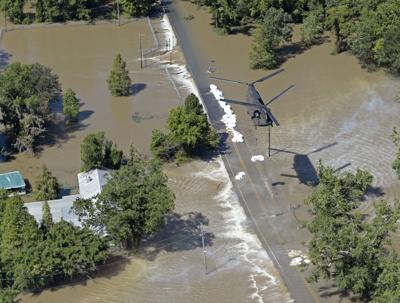As the United Nations' climate change conference was underway in Scotland, a Louisiana community took steps to shrink its carbon footprint.
The Gonzales City Council voted this month to reduce those emissions — which contribute to climate change by trapping heat — by 40% to 50% of its 2005 levels and bring those emissions to net zero by 2050.
"Localized warming and risk to our citizens from hurricanes and flooding have increased within the city of Gonzales in the last five years," read the resolution approved by the council on Nov. 8.
Nobody had to say the words "flood of 2016" out loud.
"If everyone does their part, then we can have an impact," Gonzales city engineer Jackie Baumann said.
A committee will be named to form a climate action plan. When it's rolled out, Gonzales will join about 600 other cities across the U.S. with their own plans to cut greenhouse gas emissions.
A first step of the Gonzales plan — to learn the current level of the emissions in the city and their sources — has already been completed thanks to research by a Pennsylvania State University senior and a native of Gonzales as part of his academic capstone project for his degree in energy and sustainability policy.
Jude Graham — Gonzales Mayor Barney Arceneaux's grandson — will graduate in December. The research project he did over last spring semester shows that, among other data, about 56% of the greenhouse gas emissions in Gonzales come from traffic.
"For a city the size of Gonzales, that isn't surprising," Graham said.
He worked with the city, as well as with corporate utility providers, the Capital Region Planning Commission, and other agencies to collect and analyze the data.
"It was a lot of work, a heavy lift," said Baumann.
Graham served in the Navy as a Russian linguist for six years, after training at a Department of Defense language school in Monterey, California, and was stationed in Fort Meade, Maryland, before beginning his degree program at Penn State.
"I've always been a little interested in climate change and sustainability," he said. "In middle school, I learned about coastal erosion and the major loss of wetlands; that just kind of shocked me."
In Graham's junior year at Penn State, a professor assigned the students to write a paper about climate impacts on the city where they lived.
For Graham, that was Washington, D.C., and he figured a lot might already be known about that.
"I talked to my professor, 'What if I wrote about my hometown? It would mean a lot to me and the people I care about,'" he said.
His paper was approved and written.
The professor, who was also Graham's academic advisor, ended up suggesting that further study of Gonzales would make a good capstone project.
Graham won't be involved when the city's climate action plan is drawn up, but he's excited about the possibilities.
"You kind of can't ignore climate change anymore," he said. "The 2016 flooding — Gonzales had never seen that before."
"These plans can be an opportunity to transform our community," Graham said, "to make it a better place for the people who live there."


